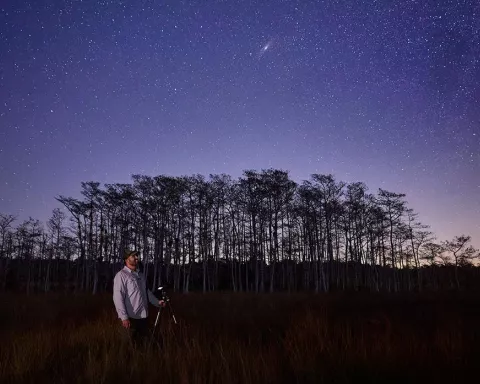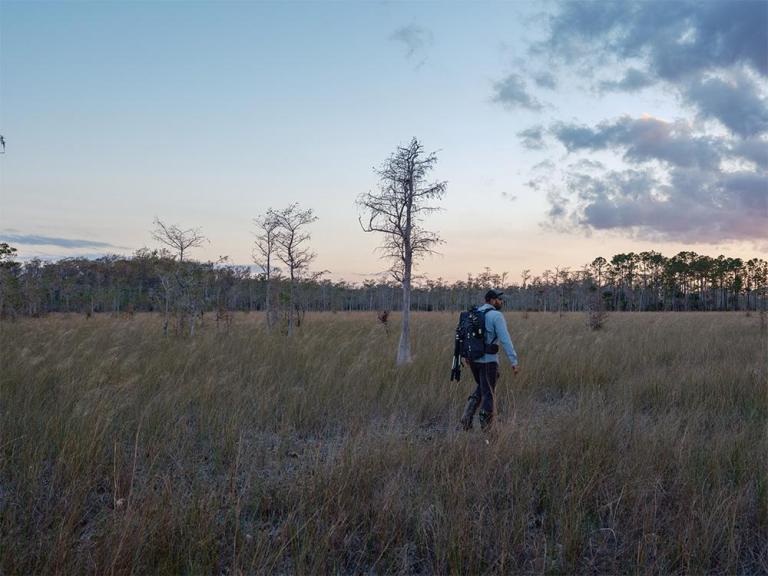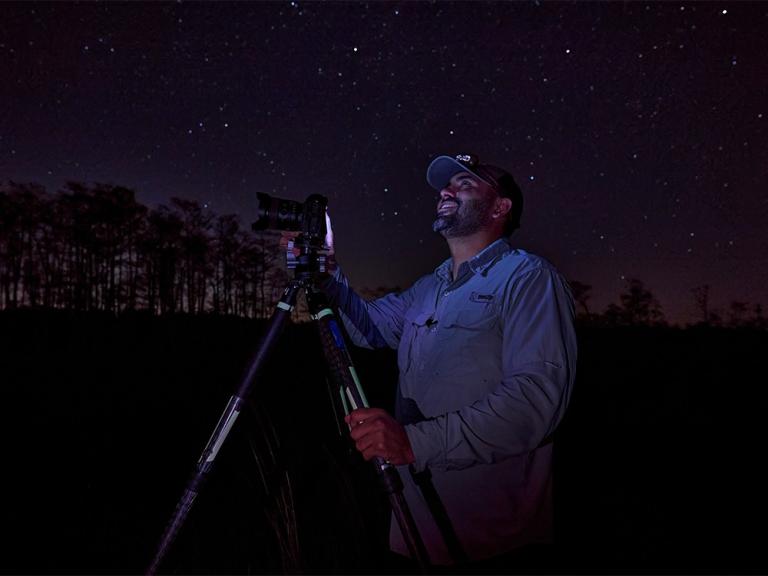Seeing the Night Differently: Astrophotographer Anthony Sleiman on Big Cypress’ Dark Skies

Anthony Sleiman didn’t grow up gazing at the stars. In fact, when he first moved from Venezuela to Miami ten years ago, the night sky was the last thing on his mind. But one day, while working at a camera store, he happened to strike up a conversation with customers who had just visited the Everglades. Their pictures stuck with him—and not long after—he bought his first camera.
As he began planning his first trip, his unusual schedule became an advantage: nights were the only time he could go. Anthony recalls first driving to the Everglades: “I rolled down my window and looked up and saw millions of stars. At that moment, something clicked in my mind. I had to get out and look at the night sky we have here in Florida...only an hour from my house!”

Capturing the Magic of Big Cypress at Night
That simple decision launched what would become a life-changing journey. Today, Anthony is a Miami-based photographer known for his stunning nightscapes, especially those taken in Big Cypress National Preserve. He’s been documenting the area – a certified Dark Sky Park – for the past six years. “I've been allowed to see the magic of this place first-hand,” he explains.
To hear Anthony tell it, the Everglades don’t sleep when the sun sets. “Normally, people think that at night, everything goes to sleep. But in the Everglades, many things wake up,” he says. “Every time I come to Big Cypress, I come expecting I’ll see something incredible.”
Whether it’s a meteor streaking across the sky or a rare comet (like Tsuchinshan–ATLAS) lighting up the horizon, Big Cypress never fails to deliver. “You might just be shooting the Milky Way one night, and then you see a ball of fire lighting up the night sky,” he says. “I watched a comet that only passes every 6,000 years.” One night, he even saw the Northern Lights – not exactly what you expect to see in southern Florida. That sense of awe is precisely what Anthony hopes to share with others.

Astrophotography Tips for Beginners
Anthony’s eagerness to have others see the beauty in what he sees is why he hosts 8–10 workshops each year, where he takes small groups out to the Everglades at night. “I've had people come on my workshops who have lived nearby for over 20 years, and they don't realize you can see the Milky Way with the naked eye,” he says. “People think they have to go to Utah or Iceland to see the night sky like this.”
And you don’t even need fancy gear to get started. “You can just bring a simple camera that can do long exposures and ISOs between 2000 and 3200 and a tripod...you don't need anything else,” he says. “If you already have experience photographing the night sky, I recommend you bring a star tracker, which will allow you to do longer exposures and capture more colors and details from the night sky.”
But beyond the gear, Anthony says, you need to have a plan. “If you're new to astrophotography or stargazing, I always recommend first going to the areas where you want to go during the day so you can scout them,” he explains. “Then, I always recommend long sleeves, long pants, closed-toed shoes. You’re going to stay for a few hours, so make sure to bring a chair.” Bug spray, plenty of water, and a satellite communicator are also on his list. “You always want to think about safety first!”
For those just starting out, Anthony offers a stargazing guide on his website that includes moon phases, meteor shower dates, and tips for catching the Milky Way core. He also recommends downloading an app like Stellarium or Sky Guide. “Have fun! Bring snacks and refreshments,” he adds with a laugh.
What You Can See at Big Cypress By Season
What sets Big Cypress apart, he says, is just how much you can see depending on when you visit. “Depending on the season, there are different things you can see. For example, if you come during winter, you can see Orion rising in the night sky. If you come during spring to late autumn, you can see the core of the Milky Way Galaxy in the night sky,” he explains. “It’s a place where you can see many different constellations and stars. It’s dark enough that you can see all of these different planets and stars.”

The Importance of Protecting Dark Skies
But Anthony assures us that his dedication to the night sky doesn’t have to do just with stargazing. “We need that connection to stars as humans,” Anthony says. “Light pollution is affecting humans and our health because it leads to sleep deprivation. Mice depend on darkness to be able to hide from predators; owls depend on darkness to be able to hunt.”
That’s why protecting places like Big Cypress matters. “We're very fortunate to be living in a time where people are doing something to protect the night sky from light pollution,” he says. “Because being out here...it's just magical. You're looking at stars that died millions of years ago, and you're looking at their light just now. It's like traveling to the past.”
He believes the stars are more than just pretty to look at—in fact, they offer a sense of perspective. “I truly believe that if we took more time to look at the night sky, we would be living in a better world.” Anthony knows that not everyone will become an astrophotographer, but he hopes more people will take the time to look up to the sky. “We don't want young kids to be afraid of the dark; we want them to be curious.”
Sometimes, all it takes is one look to the night skies to change everything. “It's always a surprise, and that's why I keep coming,” he says. “I love it.”